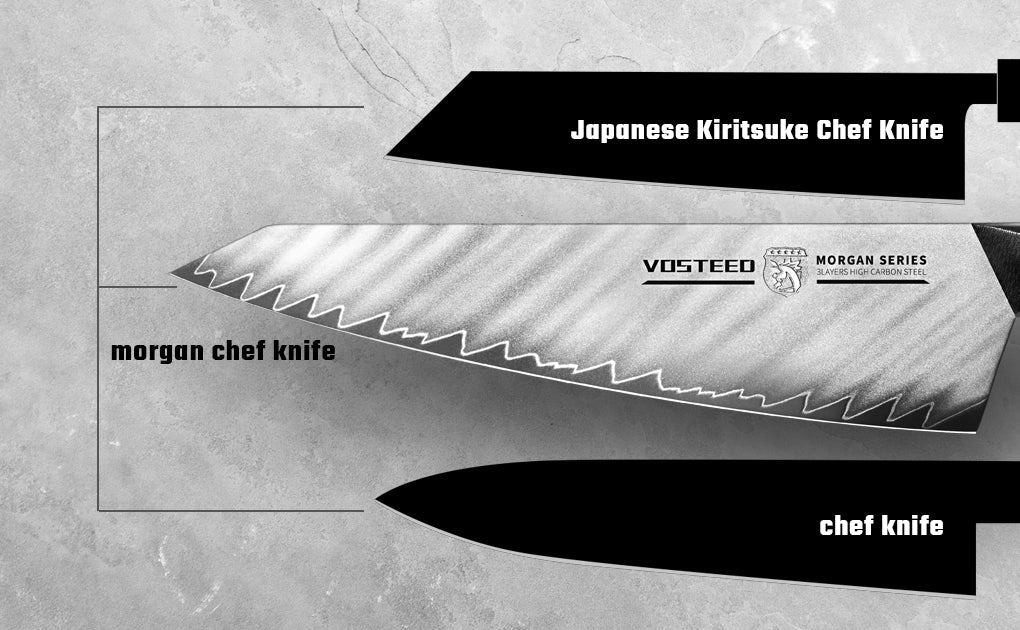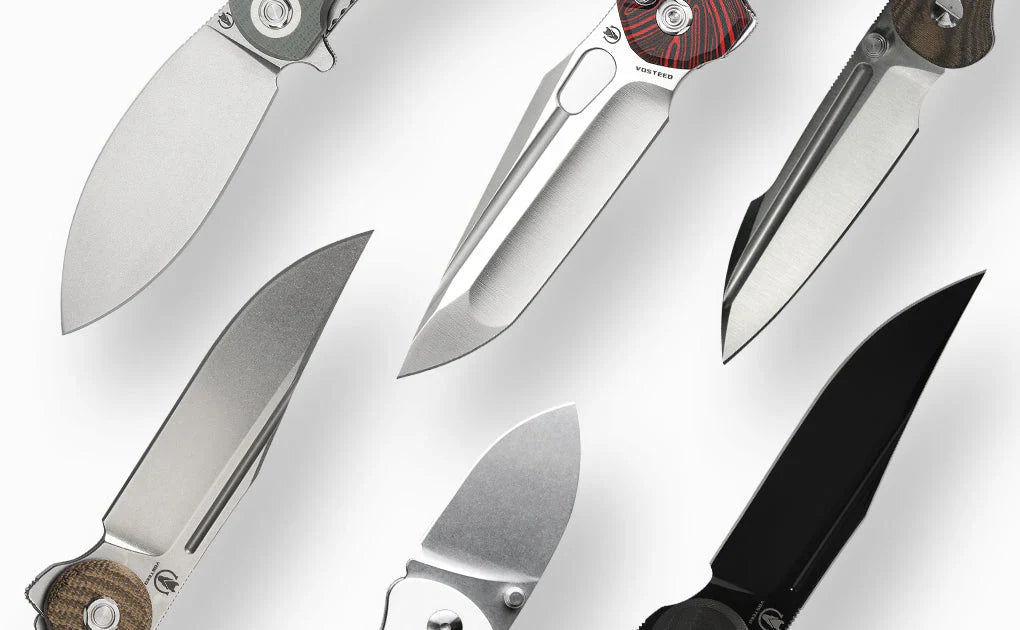There are many different kinds of steel. However, the steel basically combines iron and carbon. Steels containing different amounts of various elements will give the steel different properties and performance, for example, the performance of hardness. Carbon is the element that has one of the greatest impacts on the hardness of steel. The higher the carbon content, the higher the HRC of Steel. Therefore, a different combination of various elements would differentiate one type of steel from another.
Stainless steel
Stainless steel is the most commonly used metal for kitchen knives. Its name is quite tricky, and you may probably believe that it is completely impervious to rust. Despite its strong performance of corrosion resistance, there is still a small possibility to get rusty.
The content of stainless steel should include 10.5% or above chromium by weight. Otherwise, the knives cannot be called stainless steel.
There is a wide price range when it comes to stainless steel. It may only cost you $10 to get a stainless steel knife. However, some stainless steel knives are nearly $400 or above. But what are the differences?
Both of them are made of stainless steel. However, the durability, edge retention, and sharpness may totally different, since the stainless steel will include other elements with different combinations and they may use different techniques to manufacture their knives.
Pros:
If you are looking for a low-maintenance kitchen knife, stainless steel would be your choice. It is rust and corrosion resistance, durable, and easy to sharp.
Cons:
There are many different kinds of stainless steel knives with various quality, so if you are looking for a good stainless steel knives, it would be expensive.
Carbon Steel
Carbon steel will usually be sharper and harder than stainless steel. If you are looking for a razor-sharp knife with little effort while cutting, high carbon steel knives will meet your requirements. The high carbon steel knives will help you to chop like a dream, and vegetables are like butter if you keep the edged honed. Also, once the high carbon steel knives are sharpened, they will hold a supreme cutting edge even after long usage.
However, the performance of edge holding will usually determine the blade hardness. Therefore, when you purchase carbon steel knives, HRC would need to be focused. The commercial kitchen knives with common steel usually range between 55-60HRC. Some high-end kitchen knives with good heat treatment and outstanding steel are hardened to more from 60 to 64HRC. However, it means that it would be much more expensive in the market. But does it mean that the harder the better?
There is a disadvantage when the steel is too hard. It is easy to chip if you are going to chop hard things like bones and frozen meat.
Compared to stainless steel knives, high carbon steel knives are easy to get rusty especially when you store them in a wet place. If the blade contact with acidic foods, like lemon, vinegar, and tomatoes. Therefore, it requires you to keep it clean and dry after each time of usage.
There are some common and popular high carbon steels with outstanding performance:
- AUS-8: it contains Carbon C 0.75% and Molybdenum Mo 0.3%, making it good in wear resistance. Rockwell hardness (HRC) of AUS-8 is 58-59. It can reach 60HRC with good heat treatment. Its toughness is better than most stainless steel there.
- SLD: It is a type of Japanese high carbon steel. Due to its high carbon content, 1.5%, SLD steel HRC will reach 60HRC. If you take a closer look at its micro-structure, you will see the difference. The structure will allow you to feel and experience different while cutting things.
- 1.4116: This type of German steel is used for famous Swiss pocket knives, and is also referred to as X50CrMoV steel. It is renowned for its fantastic corrosion resistance. It has excellent edge retention and is easy to sharpen.
- VG-10: This is a high-carbon stainless steel that contains 1% of carbon. The 15.5% of chromium provides excellent corrosion resistance of the VG10, but it doesn’t mean that it is immune to corrosion.
Ceramic
Ceramic blades have their pros and cons. Ceramic is a super hard material, and the edge holding is the longest of all. Ceramic blades contact with acidic fruits, they are chemically nonreactive.
However, ceramic material will chip easily and break if used improperly. Also, you may need to specialize in sharpening skills if you want to sharpen the ceramic knives by yourself. Otherwise, the ceramic knives need to be sent back to the manufacturer to find a specialist to sharpen them.
Tool steel
Tool steel is one of the most commonly used materials for kitchen knives. D2 is popular tool steel for knives since it is high wear resistance and its higher carbon and chromium content makes this material have good corrosion resistance and prevents discoloration.
In the end, different people will have their own choices, and after knowing your cooking style and knife knowledge, you will be able to find the perfect kitchen knife for yourself.
If you enjoyed this article about kitchen knife steels, you might also be interested in our comprehensive guide on pocket knife steels. While kitchen knives serve different purposes than pocket knives, understanding the similarities and differences in steel properties can help you make better choices for all your cutting tools.





Leave a comment
All comments are moderated before being published.
This site is protected by hCaptcha and the hCaptcha Privacy Policy and Terms of Service apply.